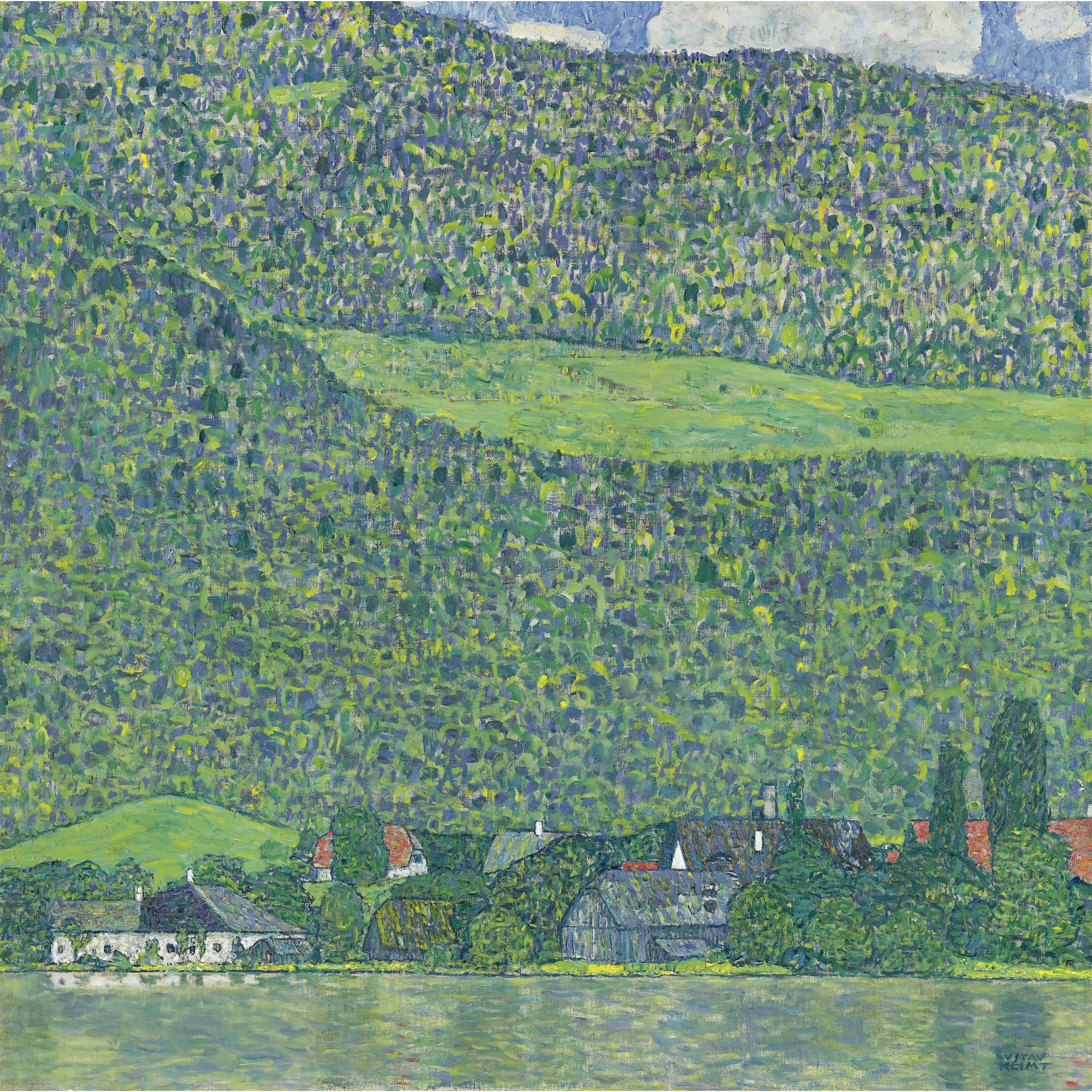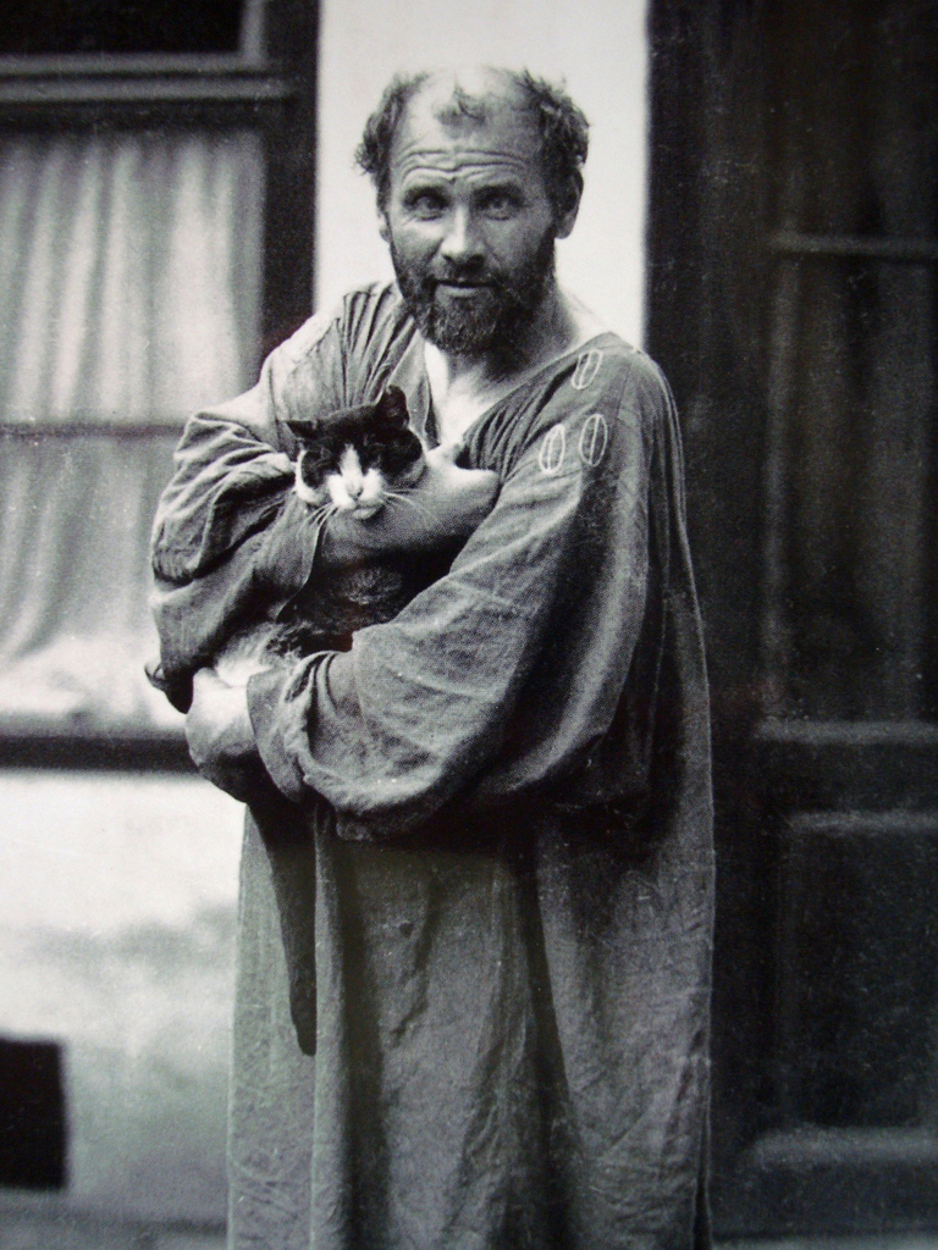Gustav Klimt is mostly known for his golden, Byzantine-inspired period, of which the famous Kiss is the best example. But at the end of his life, the artist started to paint in a way inspired by the Impressionists and some of the Post-Impressionists. The Lake Attersee view we present today is among his most accomplished and celebrated landscapes.
Klimt and his model and best friend Emilie Flöge spent the summer months of 1914 in Weissenbach on the south shore of Attersee, where a relative of the Flöge sisters lived. This picture has been historically dated to 1915 but it is possible that Klimt probably painted it in the latter half of 1914 whilst at his studio in Vienna. It is believed that the format for this composition is based on a bromide postcard of the Attersee lake which the artist had sent to his nephew on 13 August 1914.
Klimt here also builds a bold mosaic of tessellated colors, the cool blue and green tones punctuated by the bright orange of the roofs. The effect is one of a flattening-out of the landscape, creating a richly textured surface that nevertheless retains great depth in its subtle modulation of color. In this surface patterning, Klimt's Litzlberg am Attersee is perhaps inspired by the folk tapestry and stained glass window techniques in which German and Austrian artists took a keen interest in the first decades of the 20th century.
P.S. Explore the beauty of Klimt's countless landscapes! Amazing! <3


 Gustav Klimt
Gustav Klimt